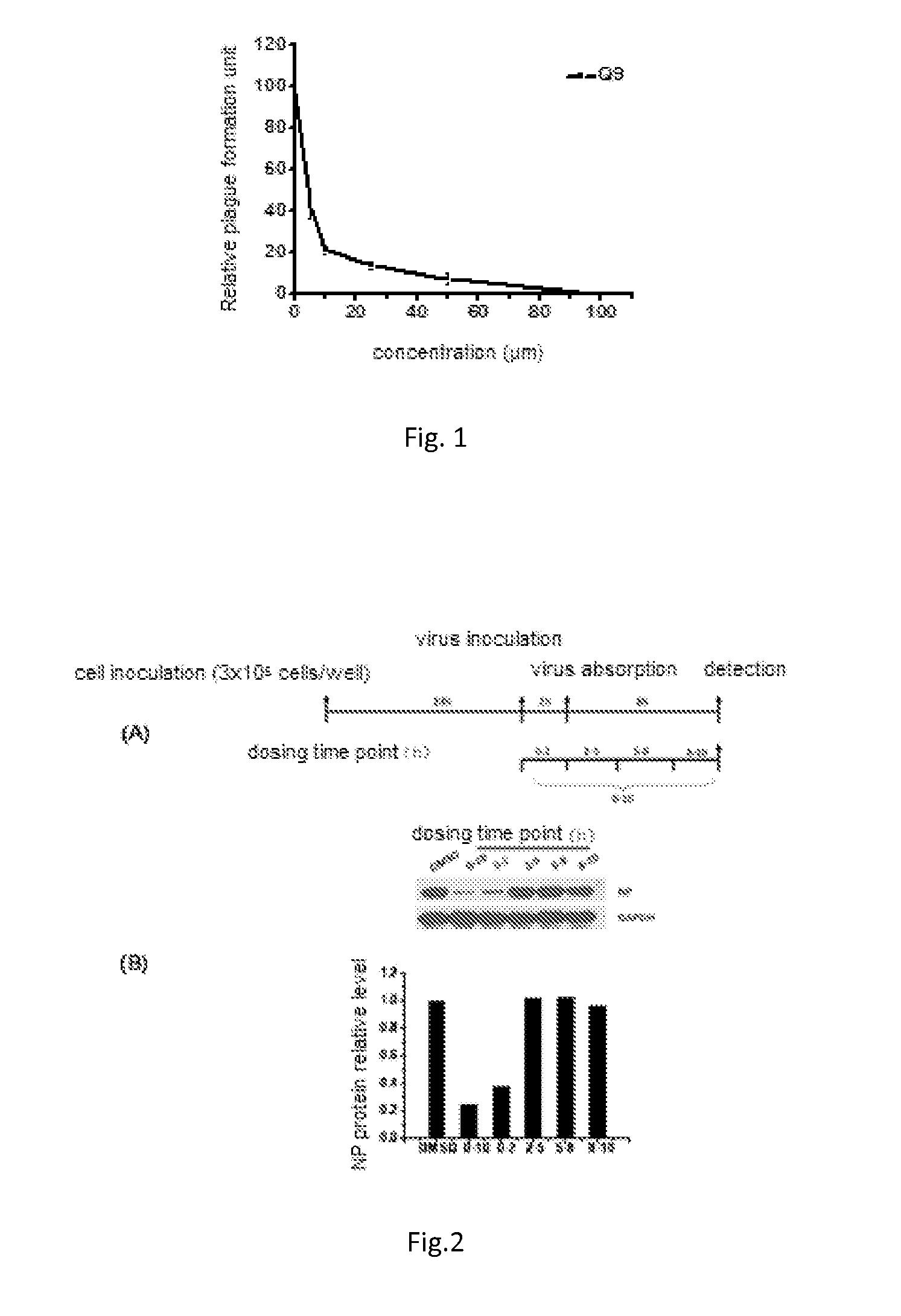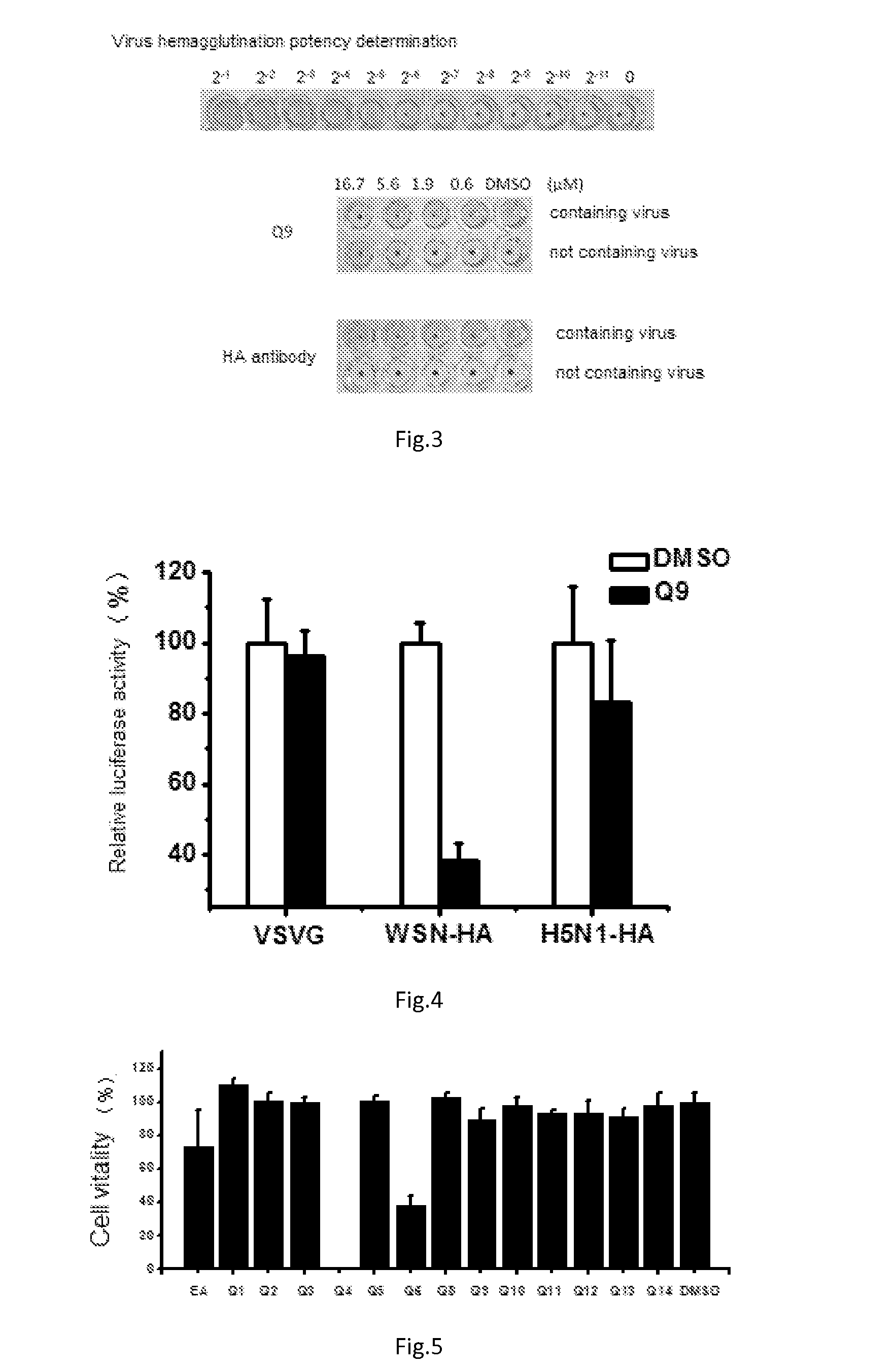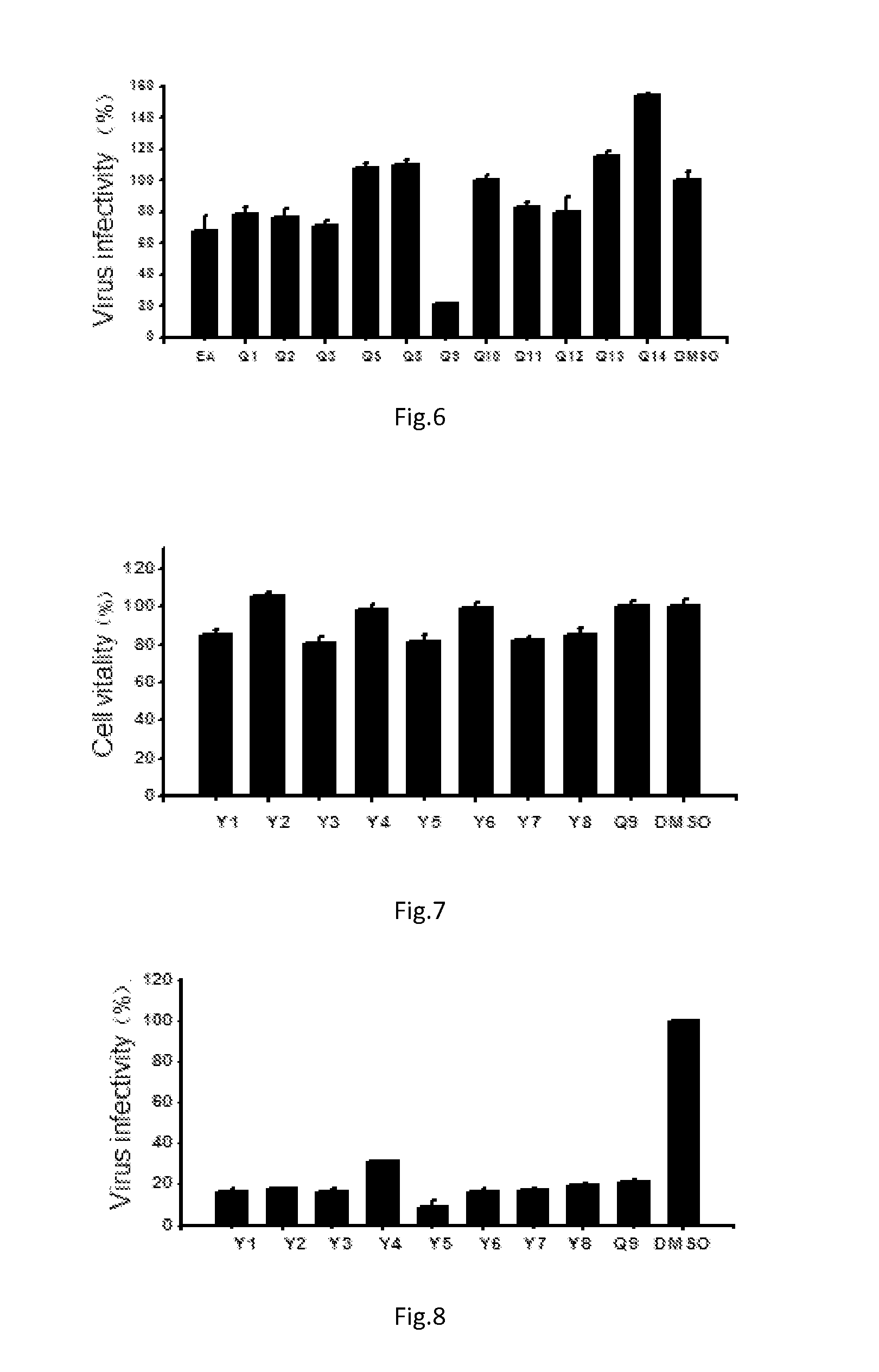Triterpene Derivative and Its Anti-Influenza Use
- Summary
- Abstract
- Description
- Claims
- Application Information
AI Technical Summary
Benefits of technology
Problems solved by technology
Method used
Image
Examples
example 1
Synthesis of 3β,16α-dihydroxy-olean-12-en-28-oic acid-28-O-(2,3,4,6-tetra-O-acetyl-β-D-glucoside) and 3β,16α-dihydroxy-olean-12-en-28-oic acid-28-O-(β-D-glucoside)
[0134]
[0135]3 g of D-glucose was added in a 50 mL reaction flask, dissolved in 24 mL of pyridine, added successively with 12 mL of acetic anhydride and a catalytic amount of DMAP. The reaction was allowed at room temperature overnight, and then stopped. The reaction was monitored by TLC until the reaction was complete. Eluent PE:AcOEt=1:1. After the solvent was removed by rotary evaporation, the resultant was dissolved with 20 mL eluent (PE:AcOEt=1:1), separated on flash column, standby.
[0136]390 mg of the above product was added in a 25 mL reaction flask, dissolved with 3 mL of DCM, slowly added dropwise with 0.21 mL of HBr-AcOH solution in ice bath, The reaction was stirred for 1 h in ice bath and then at room temperature. The reaction was monitored by TLC until the reaction was complete. Eluent PE:AcOEt=2:1. After the r...
example 2
Synthesis of 3β,16α-dihydroxy-olean-12-en-28-oic acid-28-O-(2,3,4,6-tetra-O-acetyl-β-D-galactopyranoside) and 3β,16α-dihydroxy-olean-12-en-28-oic acid-28-O-(β-D-galactoside)
[0140]
[0141]2 g of D-galactose was placed in a 50 mL reaction flask, dissolved in 16 mL of pyridine, added successively with 8 mL of acetic anhydride and a catalytic amount of DMAP, allowed to react at room temperature for 10 h. The reaction was stopped. The completion of the reaction was monitored by TLC. Eluent PE:AcOEt=1:1. After the solvent was removed by rotary evaporation, the resultant was dissolved with 20 mL of DCM, washed with 20 mL of water. The organic layer was dried over MgSO4. The solvent was removed by rotary evaporation to give a solid product of peracetylated galactose.
[0142]390 mg of the above product was placed in a 25 mL reaction flask, dissolved with 3 mL of DCM, added dropwise slowly with 0.35 mL of HBr-AcOH solution in ice-bath, allowed to react for 1 h and then to react at room temperatur...
example 3
Synthesis of 3β-hydroxy-olean-12-en-28-oic acid-28-N-(2,3,4,6-tetra-O-acetyl-β-D-galactoside) and 3β-hydroxy-olean-12-en-28-oic acid-28-N-(β-D-galactoside)
[0148]
Preparation of 1,2,3,4,6-penta-O-acetyl-β-D-galactose
[0149]3 g of D-galactose was placed in a 50 mL reaction flask, dissolved in 24 mL of pyridine, added successively with 12 mL of acetic anhydride and a catalytic amount of DMAP. The reaction was stirred at room temperature overnight. Then the reaction monitored by TLC until the reaction was complete. The solvent was removed by rotary evaporation. The resultant was mixed with 50 mL AcOEt to give a suspension, washed successively with 50 mL of distilled water three times and with 50 mL of saturated brine. The organic layer was dried over anhydrous Na2SO4 and purified on silica gel column to give the product.
Preparation of 1α-bromo-2,3,4,6-tetra-O-acetyl-β-D-galactose
[0150]2.0 g of the above product was placed in a 25 mL reaction flask, dissolved with 15 mL of DCM, added dropw...
PUM
 Login to View More
Login to View More Abstract
Description
Claims
Application Information
 Login to View More
Login to View More - R&D
- Intellectual Property
- Life Sciences
- Materials
- Tech Scout
- Unparalleled Data Quality
- Higher Quality Content
- 60% Fewer Hallucinations
Browse by: Latest US Patents, China's latest patents, Technical Efficacy Thesaurus, Application Domain, Technology Topic, Popular Technical Reports.
© 2025 PatSnap. All rights reserved.Legal|Privacy policy|Modern Slavery Act Transparency Statement|Sitemap|About US| Contact US: help@patsnap.com



